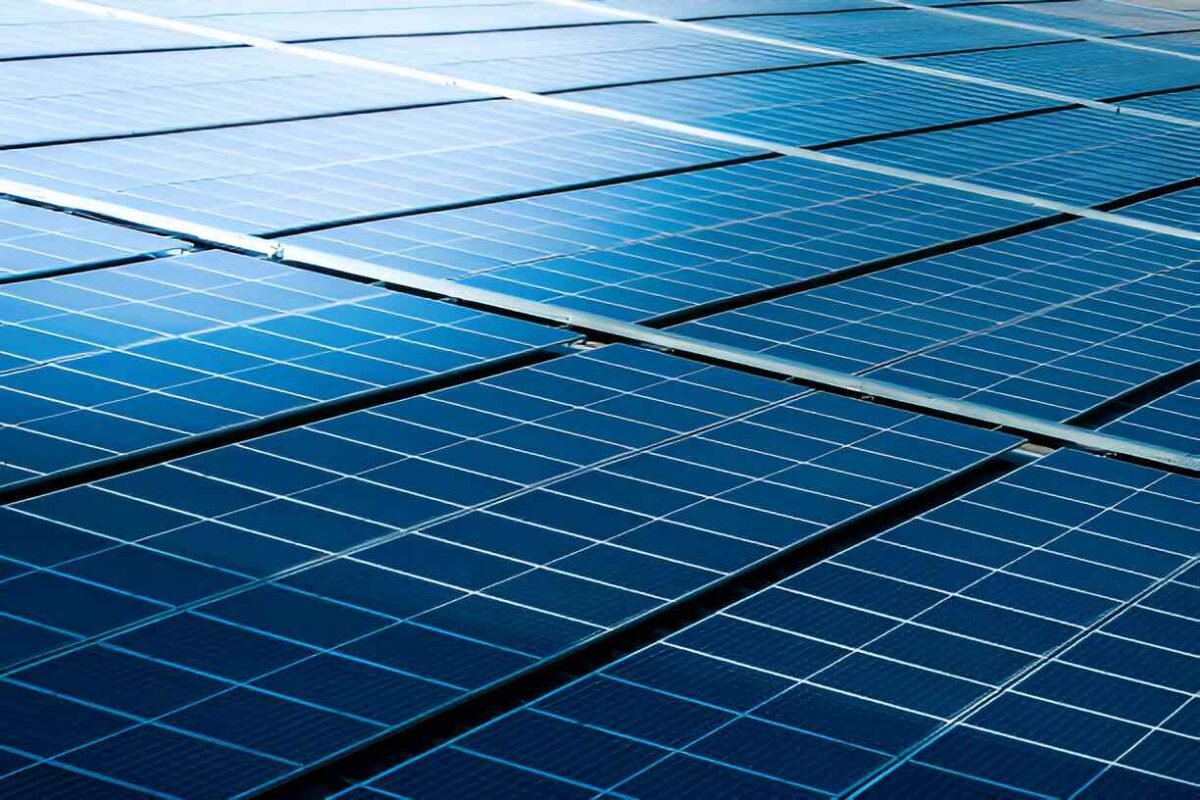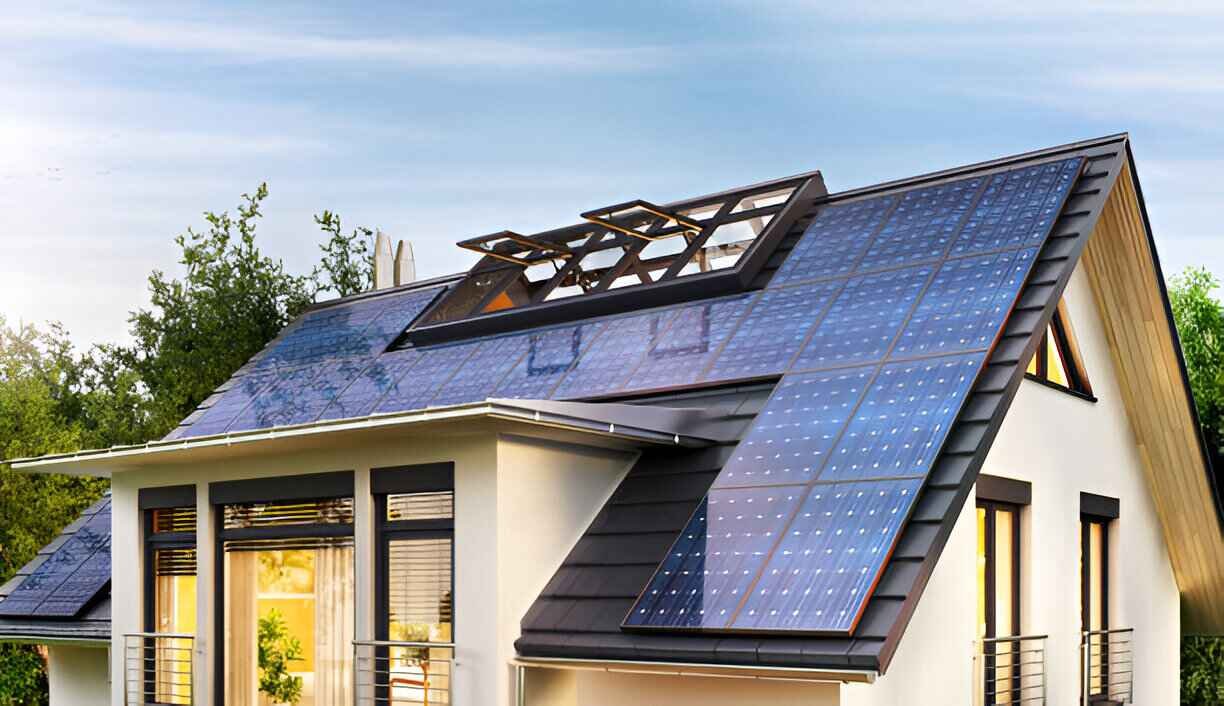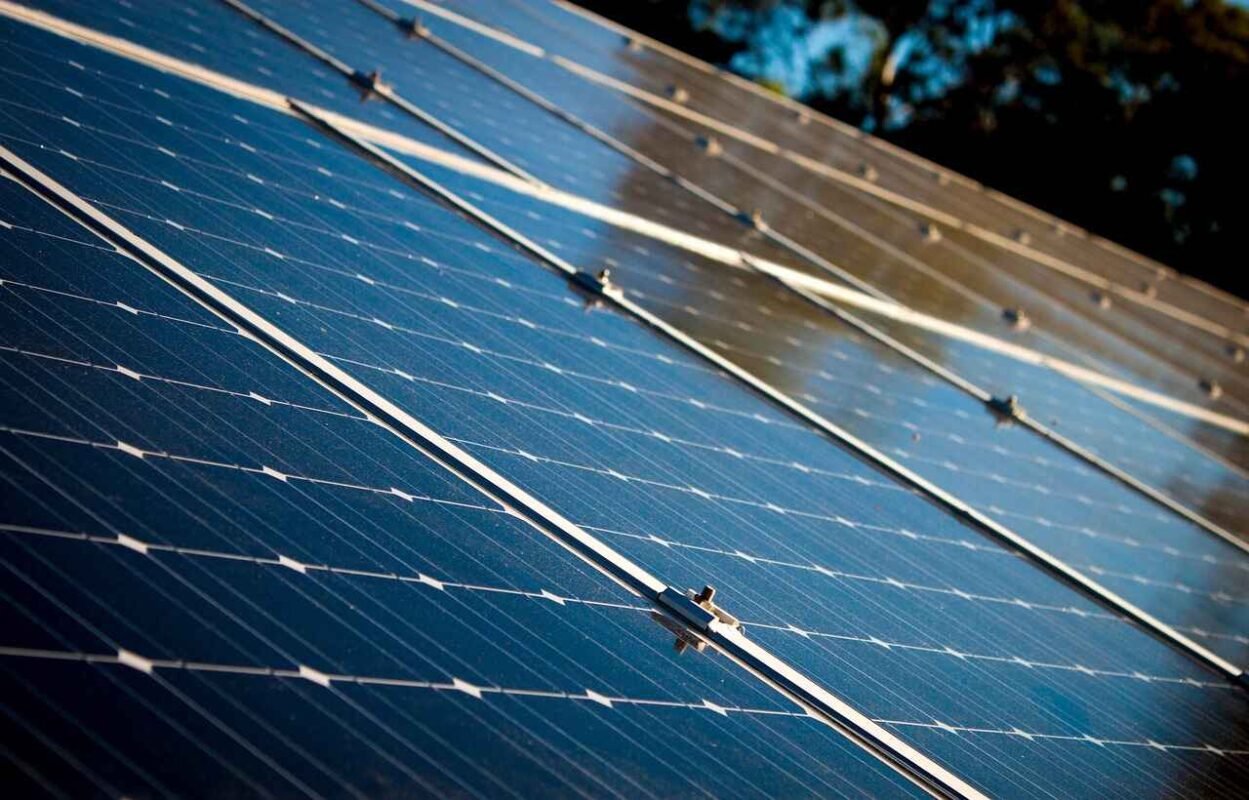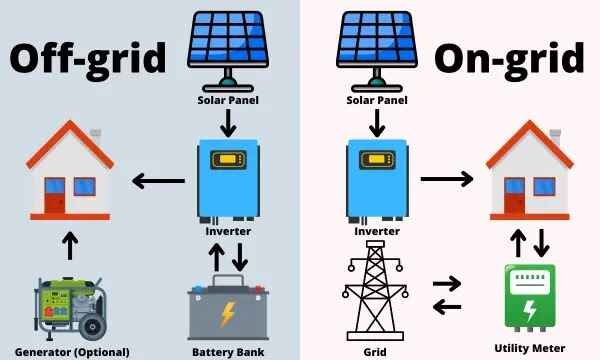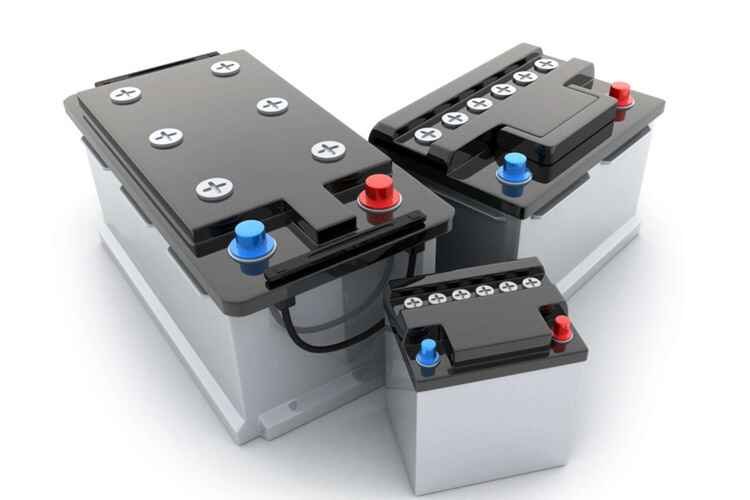Blogs
Solar Electric Systems: Harnessing the Sun’s Unlimited Power

Discover the benefits of Solar Electric Systems and learn how to harness the sun’s unlimited power for clean, renewable energy. Explore cost-effective and efficient solar solutions today!
Harnessing the sun’s energy is not just a trend; it’s a shift towards sustainable living. Solar electric systems play a crucial role in this transformation. Imagine a world where every rooftop captures the sun’s power, turning it into clean, efficient energy. Solar electric systems are at the heart of this vision, offering a way for homeowners and businesses alike to reduce their carbon footprint and embrace renewable energy.
As utility costs rise and environmental concerns take center stage, solar technology has evolved to meet the demand, making it more accessible than ever. This introduction will shine a light on how solar electric systems work, their benefits, and why they could be the smartest investment for a brighter, greener future. With every panel installed, we take a step closer to a sustainable world, powered by the infinite energy of the sun.
The Rise Of Solar Electric Systems
Solar energy is changing power generation. Homes and businesses around the world are turning to solar electric systems. This shift promises a cleaner, more sustainable future. It’s reshaping how we think about energy use. More people choose solar power every day. This move is driven by the desire for greener living and energy independence.
Global Trends In Solar Energy Adoption
Demand for solar panels is up. Nations across the globe are setting records in solar energy use. Countries like China, the United States, and Germany lead the way. They invest heavily in solar technology. Even smaller nations are joining the trend. They see the long-term value of solar power. This global adoption signals a major shift in energy resources. Solar is on track to become a dominant energy source.
Economic And Environmental Benefits
Solar power saves money. It reduces electricity bills. With solar, households spend less on power. Businesses see lower operational costs. Over time, the investment in solar panels pays off. The environmental impact is just as important. Solar reduces carbon emissions. It helps fight climate change. Clean air and a healthy planet are priceless.
Why Solar Power is a Game Changer
Switching to solar energy isn’t just about slashing your electricity bills—it’s a powerful step toward a greener planet. By reducing carbon emissions, solar power helps combat climate change and fosters a cleaner, more sustainable future.
The Science Behind Solar Energy
At the core of every solar system are photovoltaic (PV) panels, which capture sunlight and transform it into electricity. This process enables homes, businesses, and industries to generate clean power, reducing reliance on fossil fuels and contributing to energy independence.
These setups convert solar energy into electrical power, offering a sustainable energy source. Simple components and the sun’s rays make this process possible.
Diving into the world of solar energy can be as exhilarating as it is beneficial. At the heart of this renewable energy revolution is the solar electric system, a marvel of technology that harnesses the sun’s power to light up our lives. But how does this process unfold from the kiss of sunlight on a panel to the electrical energy powering your home? Let’s peel back the layers of Solar Energy Basics and explore the seamless transformation that powers our world.
How Sunlight Is Converted To Electricity
Imagine the sun greeting the earth with its warm embrace. This sunlight, composed of photons, travels 93 million miles to bestow its energy upon us. When these photons strike the surface of a solar panel, they initiate an extraordinary dance of physics. Inside the solar panel are countless atoms bound in a silicon lattice, interspersed with impurities that create a positive and a negative layer.
This meticulously designed imbalance eagerly awaits the arrival of photons. As photons are absorbed, their energy frees electrons, creating a flow—electricity, in essence. This process, known as the photovoltaic effect, is the cornerstone of solar technology. It’s a silent, clean, and incredibly efficient way to produce electricity, directly from the sun, without moving parts or emissions.
Components of a Solar Electric System: A Symphony of Innovation
A solar electric system is far from just a collection of panels. It’s an intricate ecosystem, where every component plays a crucial role in converting, storing, and distributing solar energy. Let’s break it down:
1. Solar Panels: The Sun’s Frontline Warriors
Solar panels are the stars of the show, capturing sunlight and converting it into Direct Current (DC) electricity. Positioned on rooftops or fields, they serve as the first step in harnessing solar energy.
2. Inverter: The Unsung Hero
The inverter works tirelessly behind the scenes, converting the DC electricity generated by solar panels into Alternating Current (AC). AC is the type of electricity that powers homes and appliances, making the inverter a vital part of the system.
3. Battery Storage (Optional): The Solar System’s Reservoir
Just as squirrels store food for winter, a battery storage system collects excess electricity during sunny days. This stored power comes in handy when the sun isn’t shining, ensuring a continuous power supply even at night or on cloudy days.
4. Meter: Monitoring Energy Production and Consumption
A solar meter keeps track of the energy produced by the system. In grid-connected systems, it can facilitate net metering, where homeowners can sell excess energy back to the utility company, further enhancing the economic benefits of solar power.
5. Mounting and Racking System: The Structural Backbone
The mounting and racking system serves as the foundation for the solar panels. It ensures that the panels are installed at the perfect angle to capture the maximum amount of sunlight.
The Journey of Solar Power: From Photon to Electricity
Through this harmonious collaboration of components, sunlight is transformed into usable electricity. The process is an awe-inspiring example of human innovation in sync with nature.
A Testament to Human Ingenuity
Each part of the solar electric system contributes to a cleaner, more sustainable future. It’s not just a method of power generation—it’s a symbol of the potential for harmony between human progress and the natural world. As you enjoy the comfort and convenience provided by solar power, take a moment to appreciate the silent work being done by these components.
Lighting the Way to a Sustainable Future
Every time you turn on a light or charge your device, you’re not just using power. You’re supporting a renewable energy revolution. Let the solar electric system remind you of the incredible potential that lies in adopting sustainable energy solutions.
Are You Ready to Join the Solar Revolution?
What steps can you take today to become part of the renewable energy movement? By choosing solar power, you’re not only reducing your carbon footprint but also contributing to a cleaner, brighter future for everyone.
Types Of Solar Electric Systems
Choosing the right solar electric system is key for efficient energy use. Three main types suit different needs. Let’s explore them.
Grid-tied Systems
Grid-tied solar systems connect to the public electricity grid. They offer a simple design. You can sell excess power back to the grid. It’s a cost-effective choice. No batteries are needed. Your power supply remains stable.
Off-grid Systems
Off-grid systems stand alone. They don’t link to the electricity grid. Batteries store the solar power for later. This is ideal for remote locations. It gives energy independence. But, initial costs can be higher.
Hybrid Solar Systems
Hybrid solar systems combine features. They connect to the grid and have batteries. You get power backup during outages. You can also use the grid if needed. It’s a flexible and reliable option.
Factors Affecting Solar System Efficiency
The efficiency of solar electric systems hinges on several vital factors. Understanding these can help optimize performance. Let’s explore what impacts solar system efficiency.
Panel Placement And Angle
Correct panel placement is crucial for maximum sun exposure. Solar panels should face true south in the Northern Hemisphere. The tilt angle is equally important. It should match the latitude of the installation site to capture the most sunlight year-round.
Weather And Seasonal Impacts
Weather plays a big role in solar efficiency. Clear, sunny days offer peak conditions for solar panels. In contrast, cloudy days can reduce output significantly. Seasons change the sun’s path. This affects how much sunlight panels receive. Winter days are shorter and the sun is lower in the sky. This means less energy production than in summer.
Maintenance And Care
Regular maintenance keeps panels running well. Dust, leaves, and snow can block sunlight. This reduces the amount of energy panels can produce. Cleaning panels a few times a year can prevent this. It ensures they operate at their best.
Solar Electric Systems Installation
Installing a solar electric system is a smart choice. It saves money and helps the planet. This guide explains the steps. From planning to getting permits, we cover it all.
Site Assessment And Planning
First, check your site. It must get enough sunlight. A professional can help. They will tell you the best place for your panels. This step is key to a good system.
Professional Installation Vs. Diy
Next, choose who installs your system. Doing it yourself can save money. But, mistakes can be costly. A pro knows the work. They install systems fast and right. Think about your skills before deciding.
Permitting And Regulations
Last, get the right permits. Solar installations have rules. Your city or town can tell you more. They will guide you on what you need. Following rules keeps your system safe and legal.
Cost
Exploring solar electric systems reveals a mix of costs. When it comes to powering your home or business with clean energy, solar electric systems are at the forefront of sustainable solutions. Understanding the initial investment and the long-term benefits can help you make an informed decision about whether solar power is right for you.
Breaking Down The Costs
Let’s dive into what makes up the cost of a solar electric system. Primarily, you’re looking at the price of the solar panels themselves, the inverter, mounting hardware, wiring, and installation labor. Prices vary widely based on the size of your system and the quality of the components. But don’t let these numbers intimidate you – remember that these costs have plummeted over the past decade, and they continue to decrease as technology advances. Plus, investing in solar energy can significantly reduce your monthly utility bills, leading to substantial savings over time.
Return On Investment Analysis
Let’s talk numbers and long-term gains. Solar panels typically come with a 25 to 30-year warranty, but they can keep on generating electricity well beyond that. By conducting a return on investment (ROI) analysis, you can calculate how many years it will take for the energy savings to pay back the initial cost of your system. It might surprise you that the average payback period can be as short as 5 to 8 years you take advantage of. After that, it’s pure savings – and with rising electricity rates, the value of those savings could be more than you imagine.
Are you ready to see how a solar electric system can shine a light on your energy expenses and savings? With these insights into costs and ROI, you’re now equipped to make a power move towards a brighter, greener future.
Emerging Technologies In Solar Power
Emerging technologies in solar power are elevating solar electric systems to new heights. Innovations like improved photovoltaic cells are making these systems more efficient and accessible.
Emerging Technologies in Solar Power are revolutionizing the way we harness the sun’s energy, offering new opportunities for efficiency and sustainability. With the growing need for clean energy, innovators are relentlessly pushing the boundaries of what’s possible. From advancements in materials to the integration of smart grids, the future of solar looks bright. Let’s take a closer look at the cutting-edge developments that are setting the stage for a solar-powered world.
Advancements In Photovoltaic Materials
The heart of solar technology lies in photovoltaic (PV) materials – these are what convert sunlight into electricity. Researchers are making great strides in this area, developing materials that are not only more efficient but also more affordable. For instance, perovskite solar cells are a promising new class of PV materials that offer high conversion efficiencies similar to traditional silicon cells but at a fraction of the cost. Imagine powering your home with solar panels that are as cost-effective as they are powerful – that’s the potential impact of these advancements.
Solar Storage Solutions
As the sun doesn’t shine 24/7, the question of ‘where to store all this energy?’ becomes paramount. Enter the latest in solar storage solutions – batteries that are more efficient, long-lasting, and scalable. These batteries are not just an add-on to your solar system; they’re an integral part of ensuring you have a reliable power supply, day or night. Companies are investing in technologies like lithium-ion and flow batteries, which could mean saying goodbye to power outages and hello to energy independence.
Smart Grids And Solar Integration
Integrating solar power with smart grids is like having a symphony conductor for electricity, ensuring energy is distributed smoothly and efficiently. Smart grids use digital communication technology to react to changes in electricity demand and supply. This means that when your solar panels produce excess power, it can be automatically rerouted where it’s needed most. Or, when the demand peaks, your stored solar energy can be released to lighten the load. This level of integration creates a more resilient power network, and you become an active player in shaping the energy landscape.

With these emerging technologies in solar power, you’re not just a passive consumer; you’re part of a community leading the charge towards a sustainable future. Imagine a world where your house not only powers itself but also contributes to the stability of the electricity grid. It’s a world where energy is clean, abundant, and smart – and it’s within our reach. What will your role be in this bright solar-powered future?
Real-world Applications
Solar electric systems shine in real-life settings. They power homes, businesses, and even whole towns. Here’s how they do it across different scales.
Residential Case Studies
Many homes now use solar power. It’s clean and cuts electricity bills. Families enjoy sunlight turning into energy. This energy lights up homes and runs appliances. No noise, just savings and clean power. Stories from homeowners show the big benefits of going solar. They talk about lower bills and helping the planet.
Commercial Solar Projects
Businesses are also joining in. They install solar panels on rooftops or nearby land. This move reduces operating costs. It also shows a commitment to sustainability. Solar power supports daily operations. From small shops to large offices, all see the advantage. They save money and reduce carbon footprints.
Utility-scale Solar Farms
On a larger scale, solar farms are impressive. They cover acres, capturing sunlight on a massive scale. These farms generate electricity for thousands of homes. It’s a major step towards clean energy for cities. Utility companies manage these farms. They ensure a steady supply of solar power to the grid. This approach supports community-wide clean energy goals.
The Future Of Solar Energy
Solar electric systems are shaping our energy future. They bring clean power from the sun to our homes and businesses. This energy source is growing fast worldwide. Let’s look at what’s next for solar technology.
Predictions For Solar Technology
Solar tech is getting better each year. Panels are becoming more efficient. Costs are dropping. Soon, solar could beat other power sources in price. Experts say we’ll see new advances in solar tech. Things like flexible panels and solar paints are on the horizon. These innovations could make solar power more common in our daily lives.
The Role Of Solar In Sustainable Development
Solar power plays a key part in clean growth. It helps cut carbon emissions. It’s also reliable and creates jobs. In remote areas, solar can bring electricity where it’s needed most. This can improve lives and help economies grow. Solar energy is vital for a green and fair future for all.
Challenges And Opportunities Ahead
Yes, solar energy faces some hurdles. Storage is a big one. We need better batteries to store solar power for when the sun isn’t shining. There’s also the issue of space. Large solar farms need lots of land. But these challenges bring chances for innovation. New tech and smart ideas can help us overcome these issues. The solar journey is full of potential.
Frequently Asked Questions
What Are The 3 Types Of Solar Power Systems?
The three types of solar power systems are grid-tied, off-grid, and hybrid systems. Each offers unique benefits for energy generation and usage.
What Will A 5000 Watt Solar System Run?
A 5000 watt solar system can power multiple appliances, including fridges, TVs, and lights, simultaneously throughout the day.
What Size Solar System Is Needed To Power A House?
The size of a solar system needed for a house typically ranges from 5 to 10 kW, depending on energy usage and geographical location. Optimal sizing requires analyzing monthly electricity bills and local sun exposure. Consulting with a solar provider can yield a customized solution for your home’s needs.
Why Is My Electric Bill So High When I Have Solar Panels?
Your electric bill may be high despite having solar panels due to increased energy consumption, panel inefficiency, or system malfunctions. Regular maintenance and monitoring usage can help reduce costs.
Conclusion
Embracing solar electric systems offers clear benefits. They reduce energy bills and support the environment. Solar power represents a smart choice for a sustainable future. People worldwide are making the switch. Join them and invest in clean, renewable energy. Your wallet and the planet will thank you.
Remember, every solar panel makes a difference. Let’s brighten our world, one rooftop at a time. Choose solar, choose a better tomorrow.














